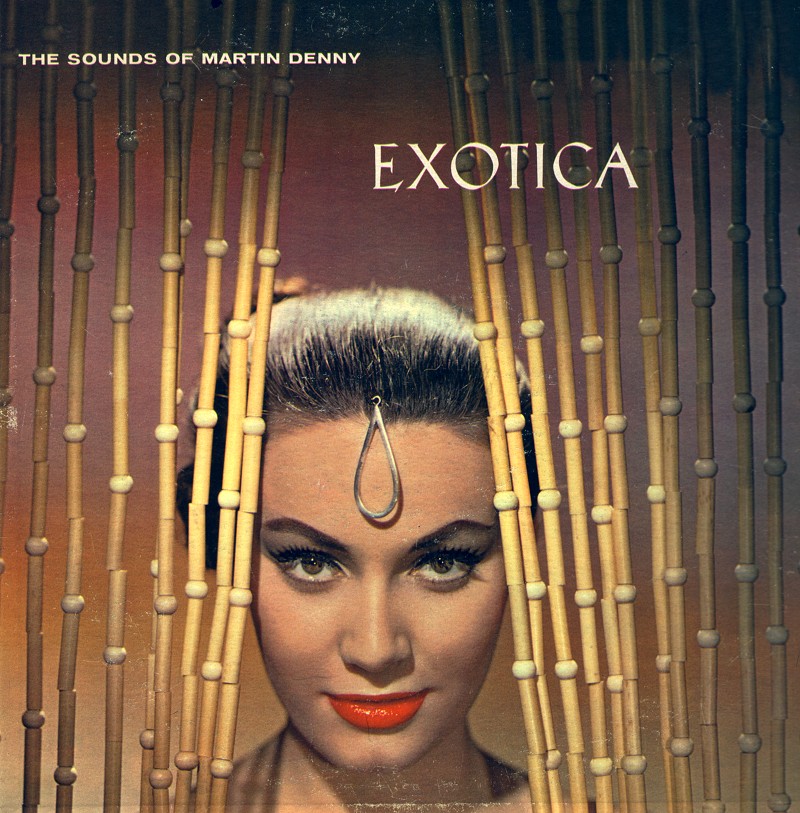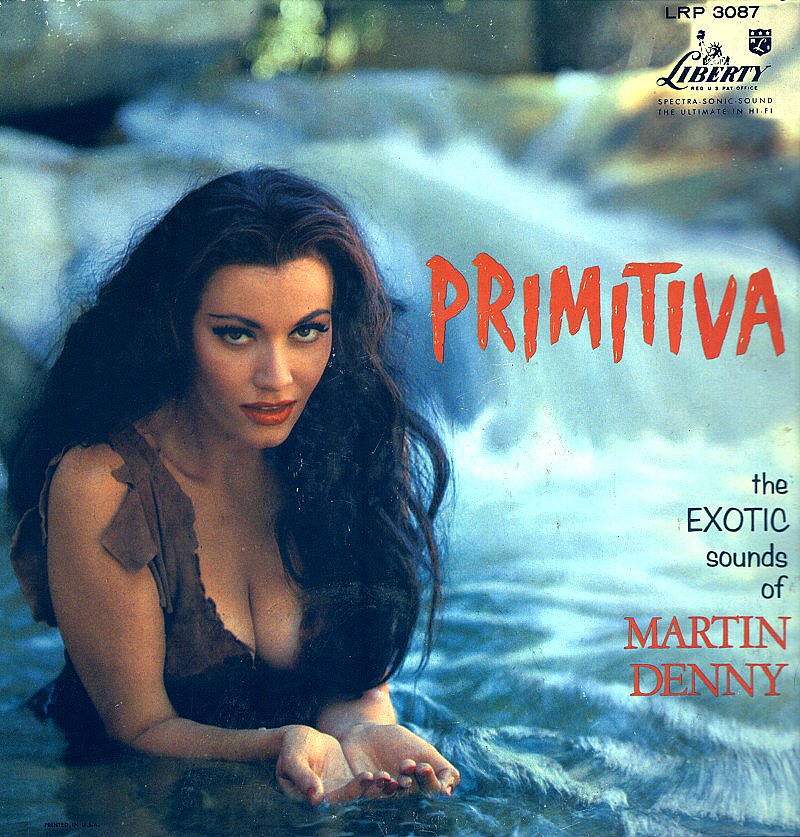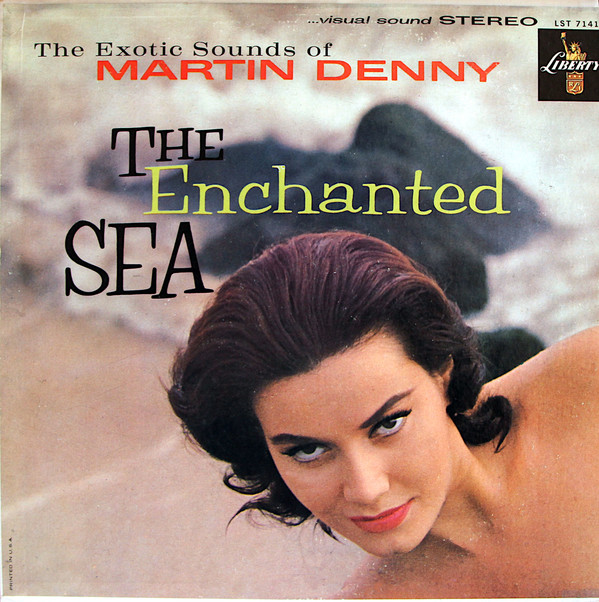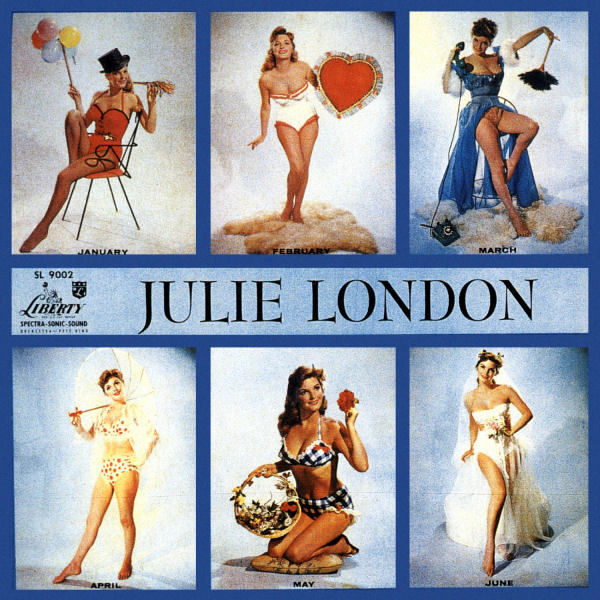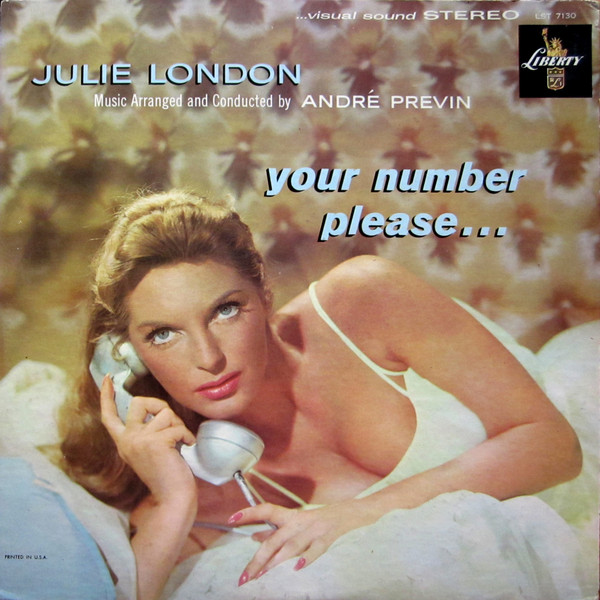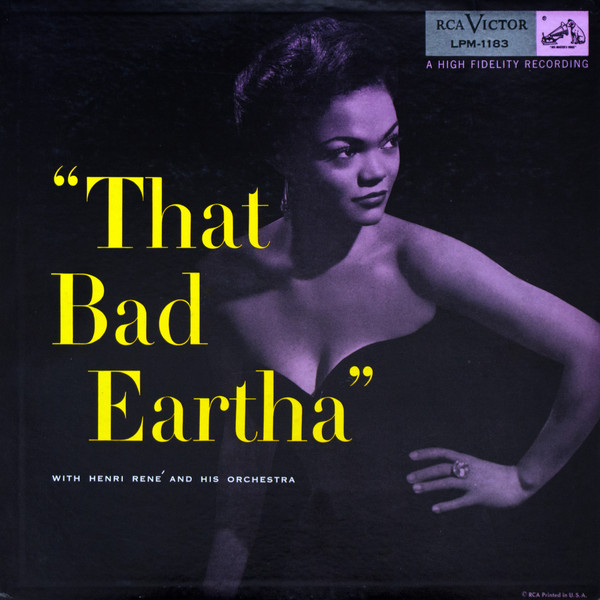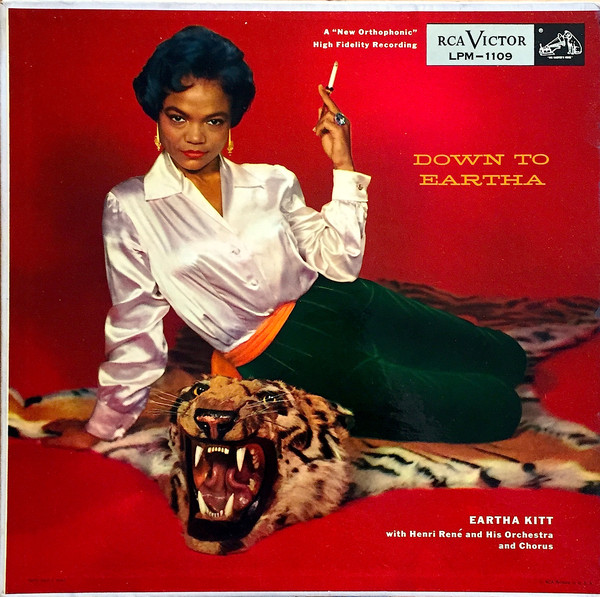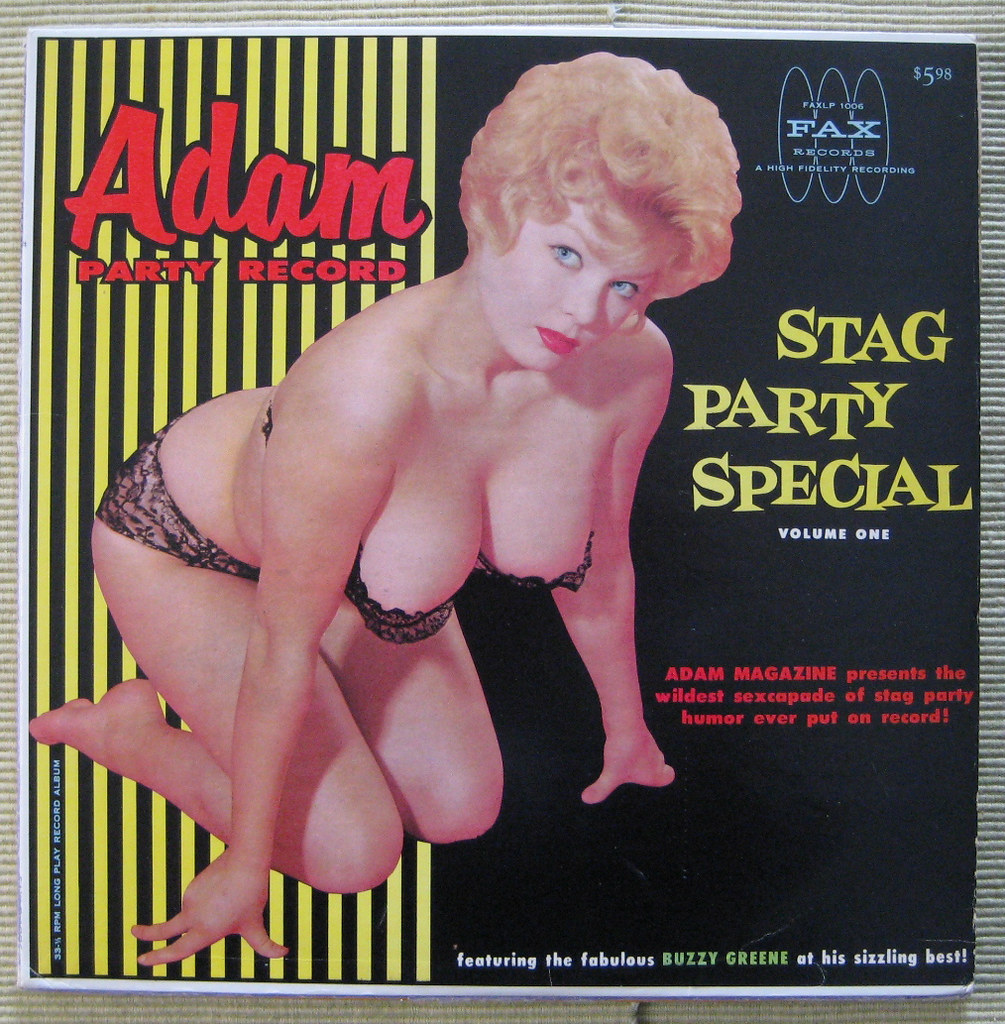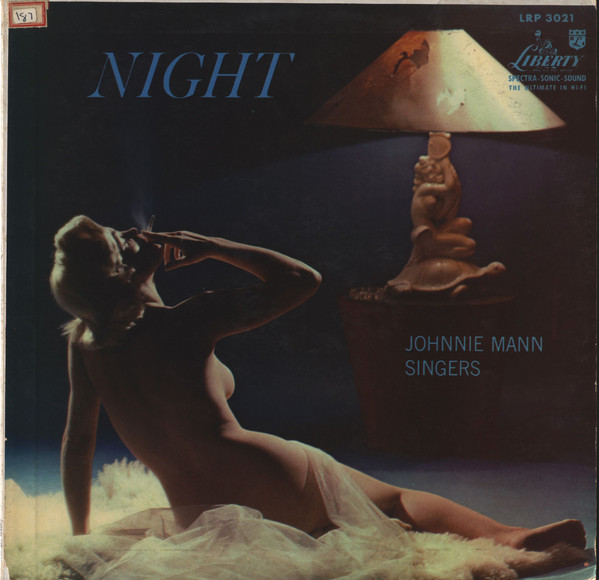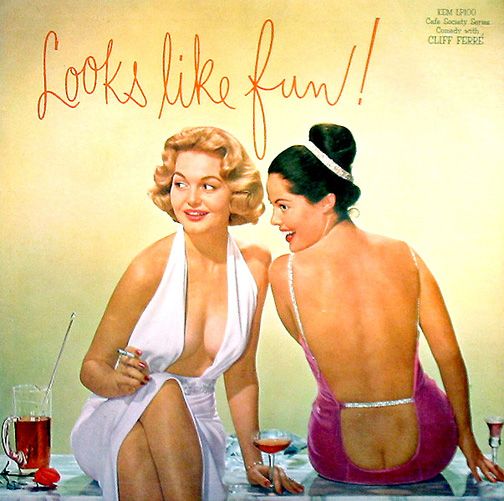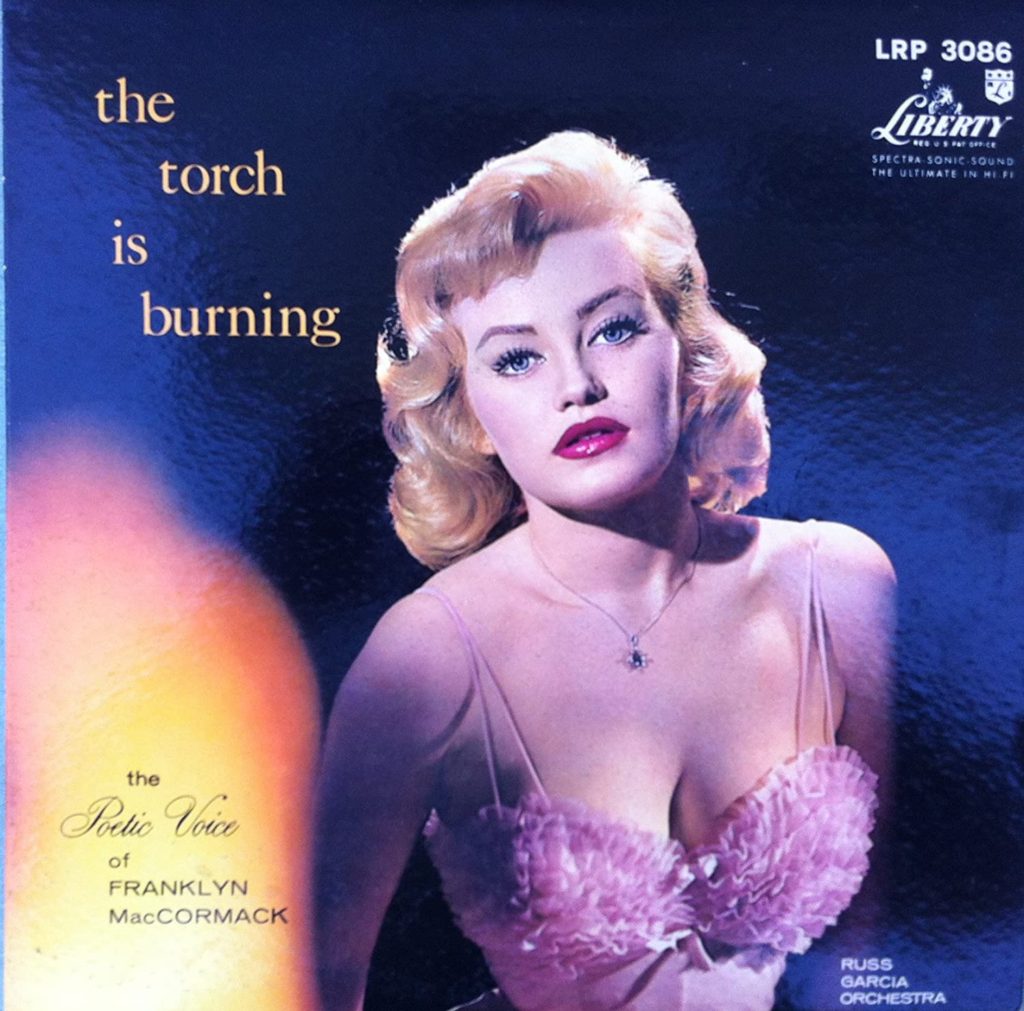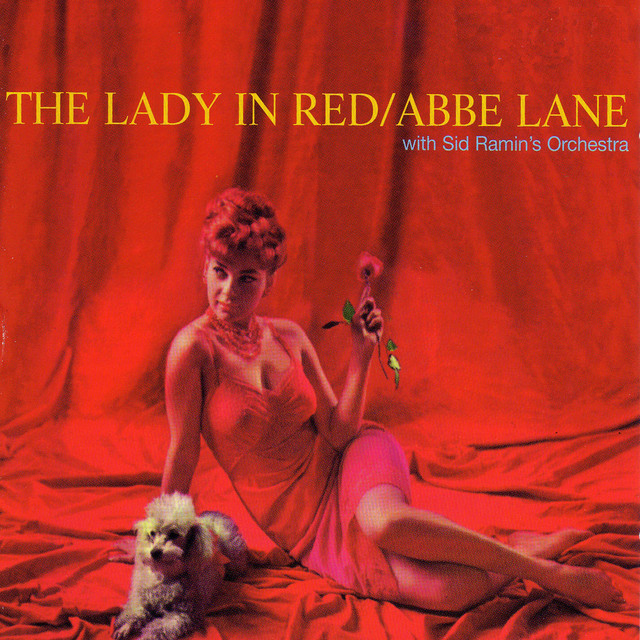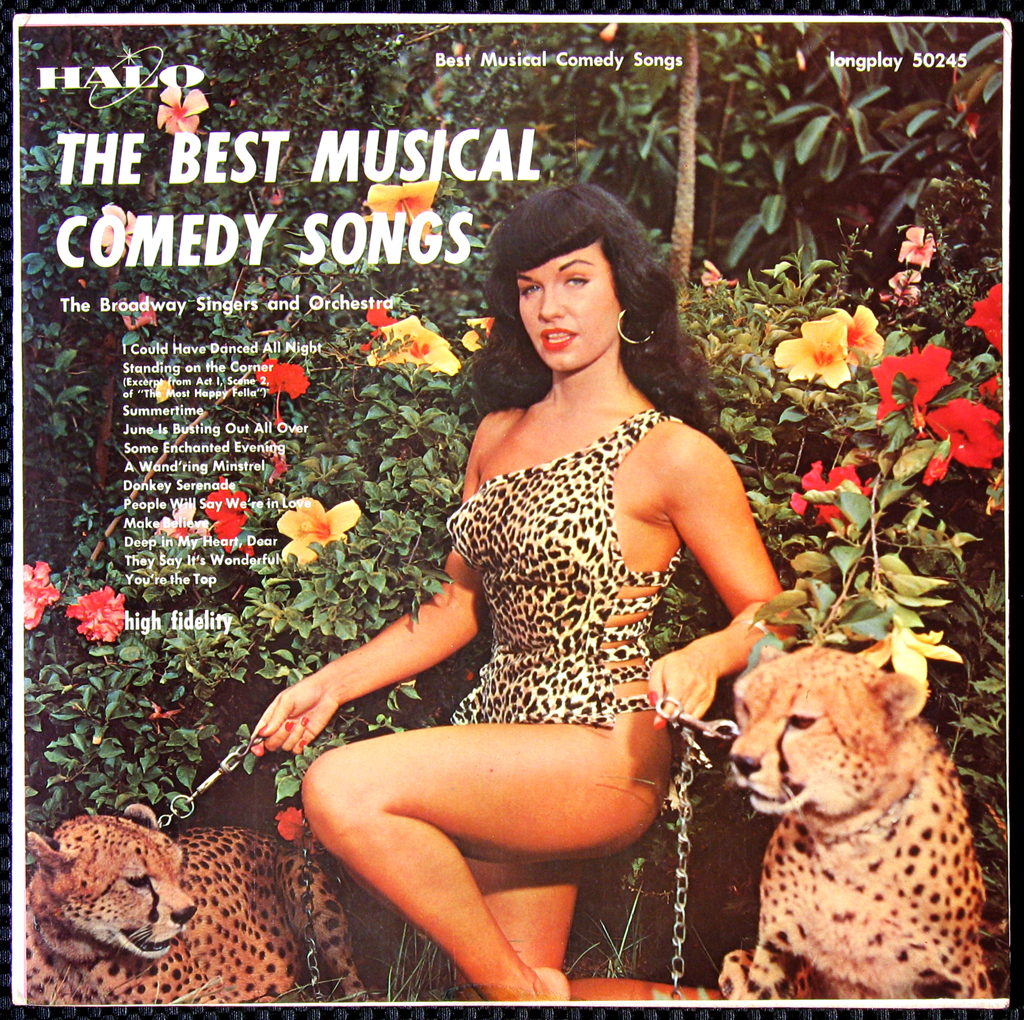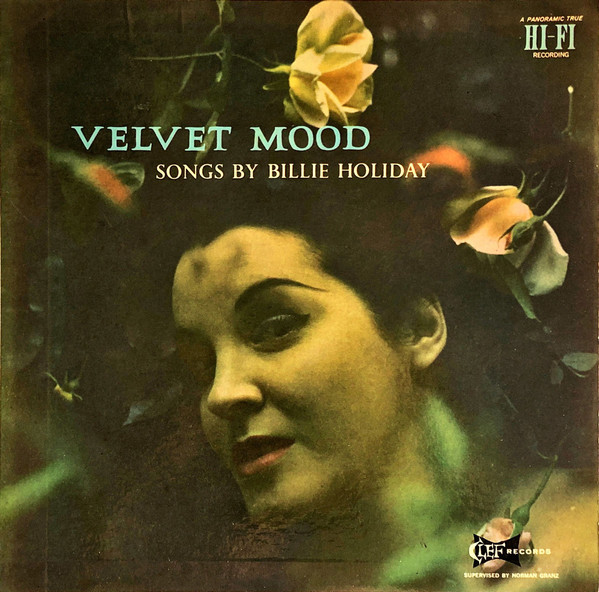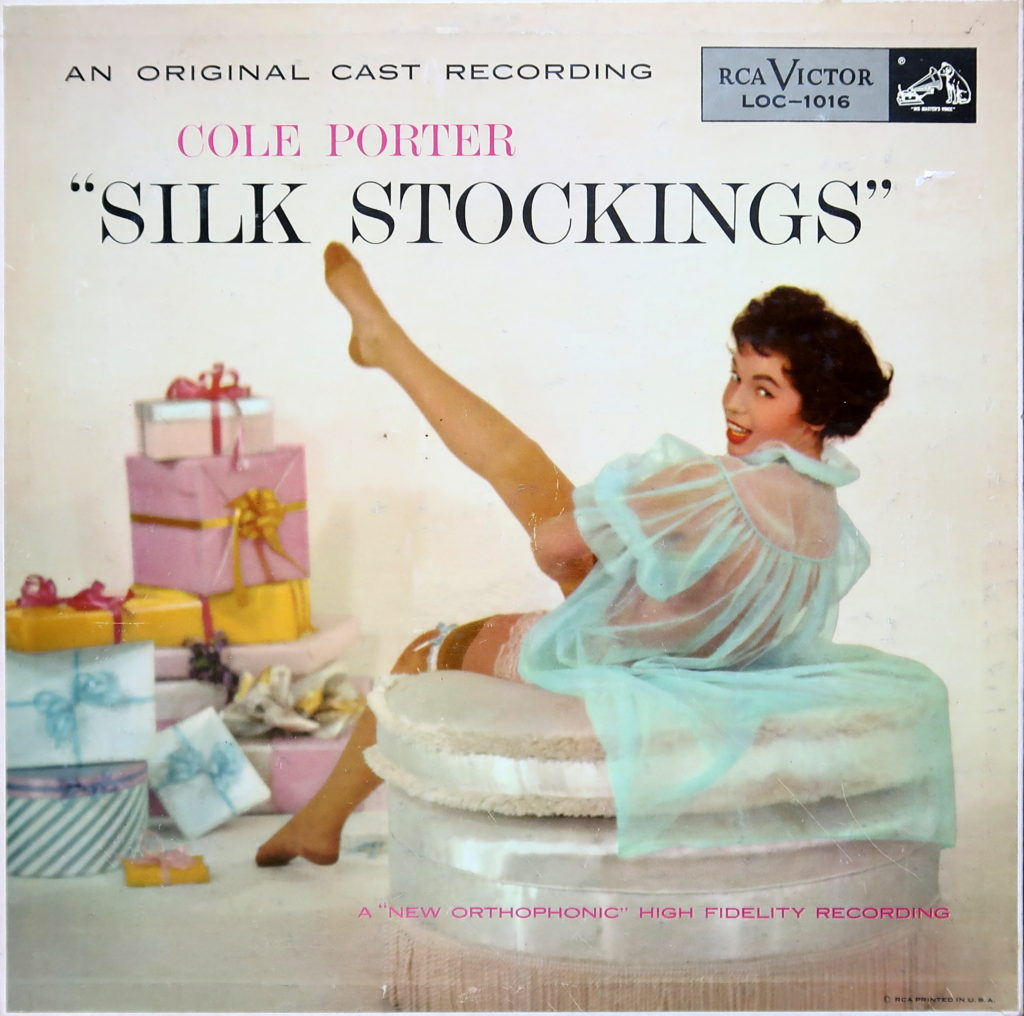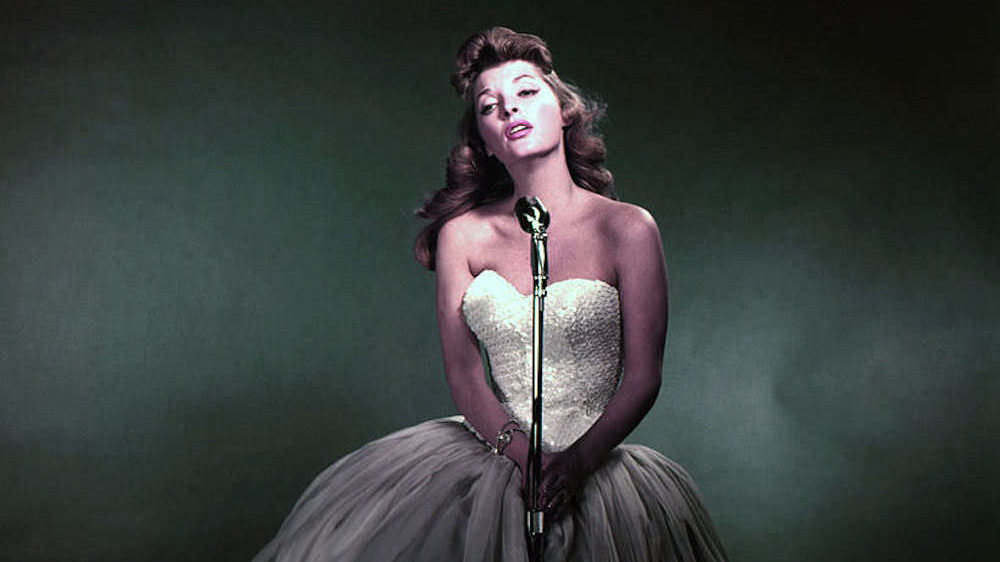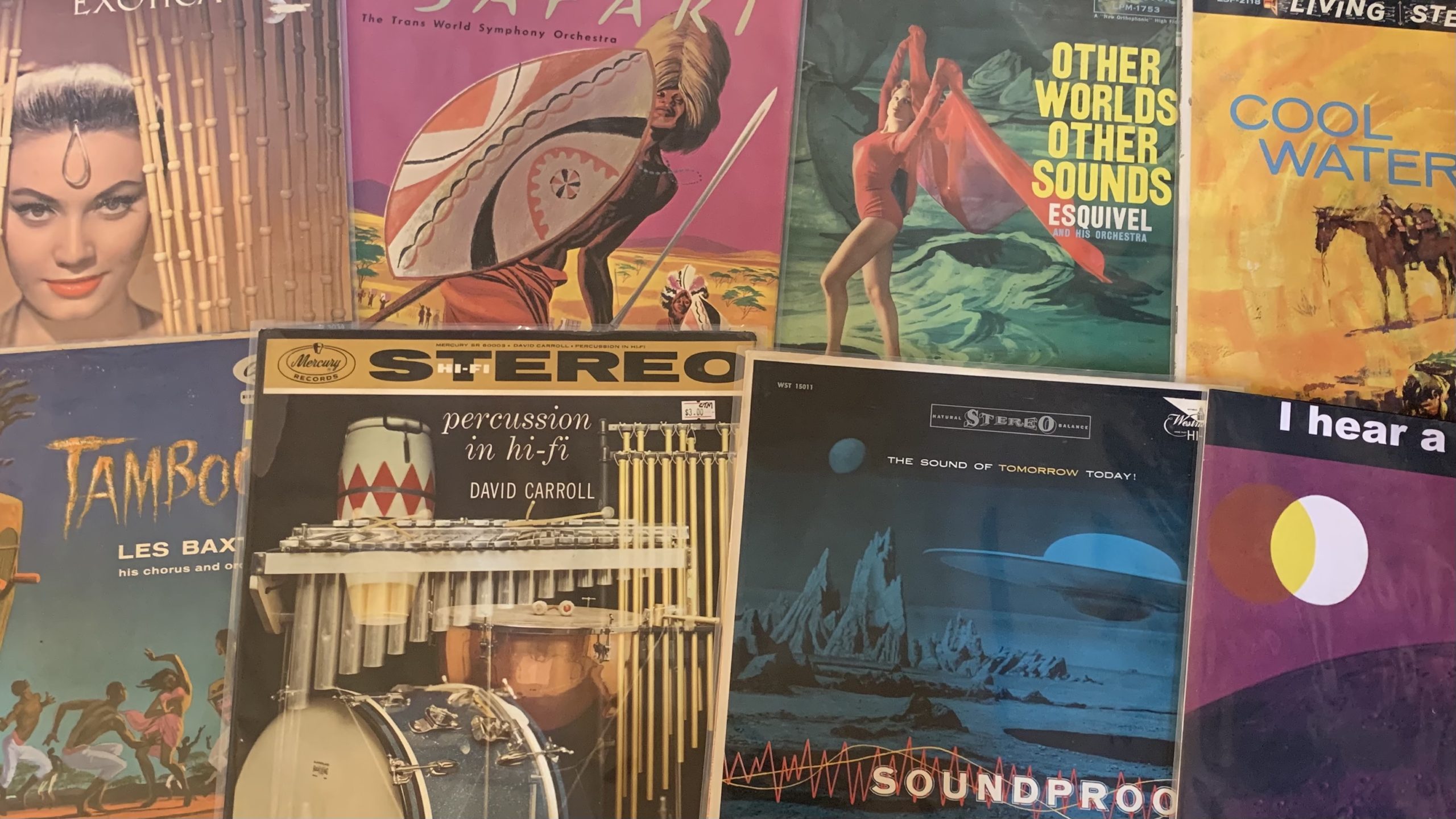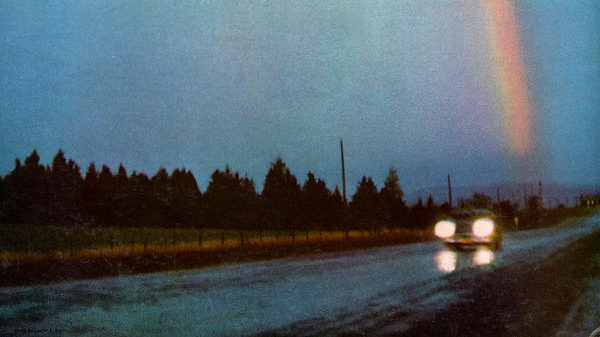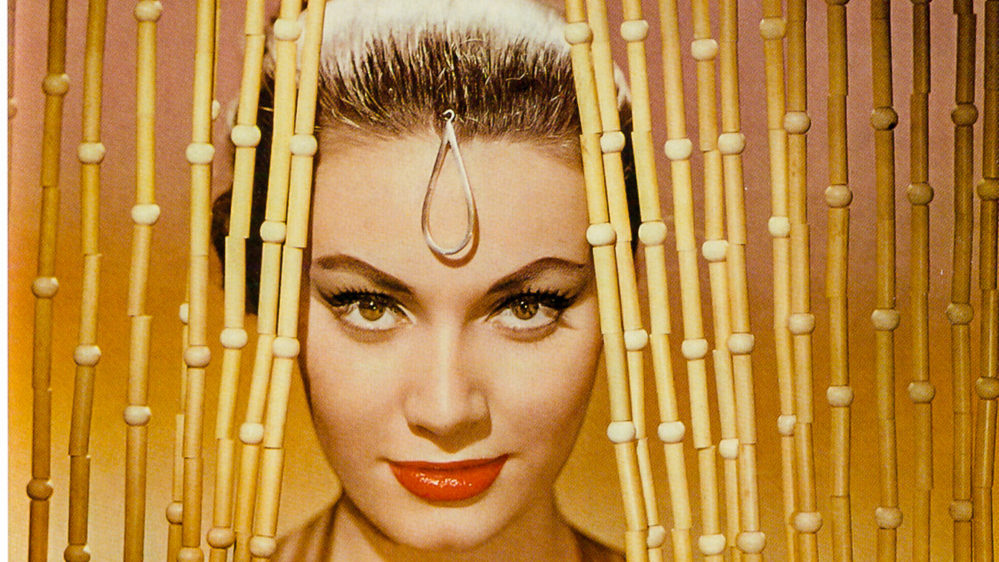
It would be a sorely missed opportunity to not wrap up June’s “Mid-Century Kitsch Month” without focusing on what is possibly the kitschiest part of that era: album cover art. While sex had always been at the forefront of mainstream music, the 1950s and 60s capitalized on the presence of the “cheesecake girls” that had invaded popular culture, and incorporated it into album art.
The American home front had been upended completely from the changes that WWII brought. Servicemen held one-night stands in droves, knowing that they very well may die in the war. In regard to sexual exploration, straight women began to frequent lesbian bars, developing relationships with women as placeholders for their husbands off at war. Infidelity became commonplace on the home front and abroad, as partners met their needs through other individuals while their spouses were away. Queer communities exploded, both overseas in the Army – most famously in the WAAC – and also at home with gay and lesbian bars, due to less scrutiny within the wartime atmosphere. The USO was developed in 1941 to boost morale, but it provided a very obvious outlet for the servicemen’s sexual inclinations. Women in the USO were tasked with entertaining enlisted men with drinks, company, and more importantly, something beautiful to look at to distract from the drudgery of military life. Within this atmosphere of lonely soldiers, pinup art exploded in popularity during the war, due to servicemen’s demand for sexual content overseas. Famously, this pinup art often made its way onto bomber planes as tokens of good luck.
When the war was over, culture couldn’t easily go back to what it had been before, like many (mostly men) had hoped. Whether they were straight or gay, women had briefly felt the taste of independence – away from the grasps of men – planting the seeds for the second wave of feminism. Straight men returned to a world in which women had thrived without their control, with many developing a backlash to the changes. Some men wanted a return to normalcy, in which women were cookie cutter housewives. Others rejected such norms, in pursuit of queer societies and liberation. The culmination of these cultural clashes would shape ideas of sexual morality to something a bit looser in the decades to come.
During the 1950s, pinup magazines had become as American as apple pie; with much of the male population embracing the blossoming medium during the repressive era of McCarthyism. A nude Marilyn Monroe appeared pasted to the walls of thousands of male dorms and repair shops; beauty contests swept the nation; and Hollywood doubled down on creating new blonde bombshells like those in the centerfolds of pinup magazines. Record companies took note of this growing trend, and used it as a marketing tool to straight men – because the famous adage was painfully true in this era. While earlier decades had taken advantage of sexuality selling albums, the 1950s and 60s took it to another level.
If you go to your local record store and flip through the “Lounge” section, almost every album you’ll come across is laden with sultry models, all begging for the listener’s attention. Lounge and exotica are the sections where “cheesecake” covers are most present, with Martin Denny’s being among the best-known to feature pinups. The first Exotica album features model Sandra Warner gazing seductively behind a beaded curtain with her lips slightly parted, teasing at the possibility of a night with her. In 1957, Exotica reached Billboard’s No. 1 spot, which I’m sure was in part due to Warner’s looks. The success of Sandra Warner’s modeling on the first Exotica album landed her the job of appearing on Denny’s first twelve record covers. Warner set the tone for exotica – and cheesecake covers to come – but while this article is intended to discuss the impact that pinups held in popular music, it should be noted that exotica albums are often embarrassingly racist in their fetishizing of Asian and Pacific Islander people.
During the mid-century era, accomplished women vocalists adopted more sexually charged appearances in place of the conservative headshot covers of the past. Julie London is a clear cut example of this, as her second album, Calendar Girl, draws from pinup work by artists like Alberto Vargas and Gil Elvgren. London’s tenth album, Your Number Please…, features a great cover of her lying amongst the pillows of her bed in a white slip, holding her phone to invite the listener to send their number.
Pop singer Eartha Kitt translated her hyper-sexualized persona to her album covers, drawing from the “bad girl” stereotype. Her 1956 release, That Bad Eartha, framed her as being “bad”; not evil to say, but a sex kitten who knew what she wanted. Kitt’s earlier release, Down To Eartha, pulls from a similar stereotype; one of the femme fatale. Stated in its name, the femme fatale was a femme woman – acting outside of their assigned sexual norms – who often proved fatal to the male counterparts that they used for their own benefit. Eartha Kitt’s records and persona fuel this fantastic self-image that heroically challenges racist, over-sexualized views of Black women, and claims her sexuality for herself.
Record companies utilized photos of famous actresses and pinups to feature prominently in their borderline pornographic album covers. Even the world’s most famous pinup and fetish model, Bettie Page, appears on a few records. Actress Jayne Mansfield appears on numerous covers, offering the same alluring poses as any other cheesecake girl. Jazz artists capitalized on this, like Cannonball Adderly on his album Sophisticated Swing, which features a backside shot of a curvaceous woman stepping out of a red sports car. Big band and easy listening held an aura of sexuality with their music that begged to be danced to. Striptease and burlesque albums became a way to take the stage home, suggesting that women use the music as a track to dance for their husbands with. The intended beneficiary of this content was the male gaze, but it inadvertently provided power to women. Many second- and third-wave feminists would critique such artwork as being exploitive and demeaning to women. However, what often fails to be recognized is that social power does exist through sexuality, and that some women can find their own agency in embracing hyper-sexuality.
Where there was prudence, sexuality grew from it. The mid-century taught women to be respectable, while the media of the era glamorized “bad girls” as desirable. Schools screened films on the threat of the “homosexual menace,” and yet lesbian pulp novels sold millions of copies. Sock hops were seen, especially now, as innocent products of the era, but in reality were sexual opportunities for teens and young adults. Society existed in a perpetual contradiction, and the artwork of popular mid-century albums reflects the culture’s battling morals. The influence of pinup girls can be seen replicated numerous times over the decades, with Roxy Music’s self-titled debut, The Cramps’ Big Beat From Badsville, Lana Del Rey’s Born To Die, and Billie Elish’s upcoming Happier Than Ever. Pinup has now become a timeless art form, and a mode of expression that continues to be pulled from and evolved.

